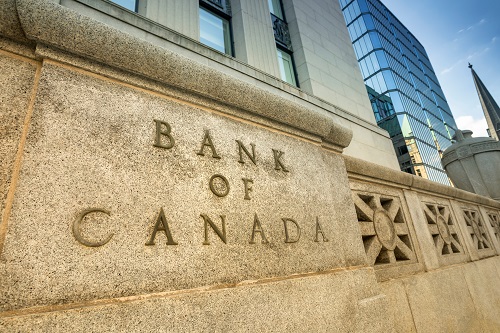In a strategic move to address a cooling economy, the Bank of Canada (BoC) has lowered its key interest rate to 4.50%, a reduction of 25 basis points from its previous rate of 4.75%. This adjustment marks the BoC’s second consecutive rate cut, following a similar decrease in June.
The decision reflects the central bank’s response to ongoing economic challenges, including reduced inflation and slower economic growth.
The BoC’s announcement underscores its commitment to navigating a complex economic environment marked by weakening inflationary pressures and slower consumption.
The BoC in a note, said:
“With broad price pressures continuing to ease and inflation expected to move closer to 2%, Governing Council decided to reduce the policy interest rate by a further 25 basis points. Ongoing excess supply is lowering inflationary pressures.
Revised economic projections
Alongside the rate cut, the BoC has revised its GDP projections downward, reflecting lower consumption and reduced demand for motor vehicles and foreign travel.
“Economic growth in Canada has picked up but remains weak relative to population growth. Household spending has been soft. Pent-up demand for things like new cars and travel is fading. And many families are setting aside more of their income for debt payments, leaving less money for discretionary spending,” the governor said.
The central bank now forecasts a 1.2% growth rate for 2024, down from the 1.5% predicted in April.
“Overall, the Bank forecasts GDP growth of 1.2% in 2024, 2.1% in 2025, and 2.4% in 2026. The strengthening economy will gradually absorb excess supply through 2025 and into 2026,” the BoC, said.
Despite these adjustments, the BoC remains optimistic that inflation will hover around 2.6% this year, with a sustainable return to the 2% target expected in the second half of 2025.
Further rate cuts could happen, says Governer Macklem
Governor Tiff Macklem emphasized that the Canadian economy still has room to grow without igniting inflationary pressures.
He suggested that further rate cuts could be on the horizon if inflation continues its downward trend.
However, the central bank also indicated that it will take a cautious approach, closely monitoring economic data to guide its decisions. In prepared remarks, Macklem said:
“If inflation continues to ease broadly in line with our forecast, it is reasonable to expect further cuts in our policy interest rate. The timing will depend on how we see these opposing forces playing out. In other words, we will be taking our monetary policy decisions one at a time.”
Market reaction and currency impact
The announcement triggered a depreciation of the Canadian Dollar (CAD), which dropped to a three-month low against the US Dollar (USD).
The USD/CAD exchange rate neared the 1.3800 mark, reflecting market anticipation of the rate cut and the subsequent volatility.
The reaction underscores the sensitivity of currency markets to central bank policy shifts and economic forecasts.
Inflation and economic data
Inflation in Canada has shown signs of cooling, with the Consumer Price Index (CPI) rising by 2.7% in June, below the BoC’s earlier forecast of 2.9% for the first half of 2024.
Month-over-month, the CPI fell by 0.1%, marking the first deceleration since December.
This slowdown in inflation, coupled with a loosening labor market, where Canada lost 1,400 jobs in June and saw the unemployment rate rise to 6.4%, bolstered the case for the July rate cut.
Technical analysis and market outlook
Dhwani Mehta, Asian Session Lead Analyst at FXStreet, provided technical insights into the USD/CAD pair, noting that it is positioned at the highest level in six weeks, at 1.3775.
In a report on FXStreet, Mehta said:
“The USD/CAD pair is sitting at the highest level in six weeks at 1.3775 in the lead-up to the BoC showdown. Buyers appear to be biding time before the next leg higher, as the 14-day Relative Strength Index (RSI) stays firm above the 50 level while a Bull Cross remains in the making. The 21-day Simple Moving Average (SMA) is on the verge of crossing the 50-day SMA for the upside, which if realized daily closing basis will validate a bullish crossover.”
Mehta pointed out that key technical indicators suggest potential for further upside, with the 21-day Simple Moving Average (SMA) on the verge of crossing the 50-day SMA, indicating a bullish trend.
“On a renewed upside, USD/CAD could initiate a fresh advance toward the 2024 highs of 1.3846. Ahead of that, the 1.3800 barrier needs to be taken out decisively. The next target for buyers is aligned at the 1.3900 round level. Conversely, strong support is seen at around 1.3680, where the 21-day and 50-day SMA converge. Acceptance below that level will put the 100-day SMA of 1.3630 to the test. The last line of defense for USD/CAD optimists is at the 200-day SMA of 1.3595.”
The post Bank of Canada cuts key interest rate to 4.50% and lowers 2024 growth forecast amid cooling inflation appeared first on Invezz
